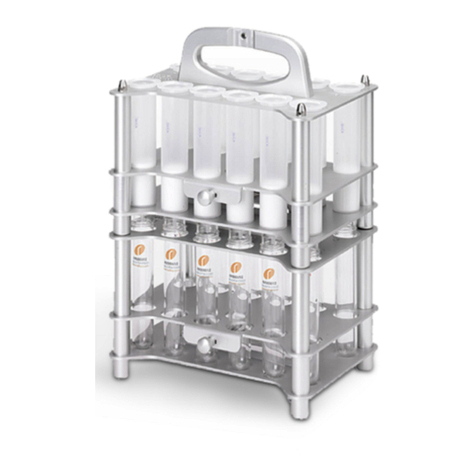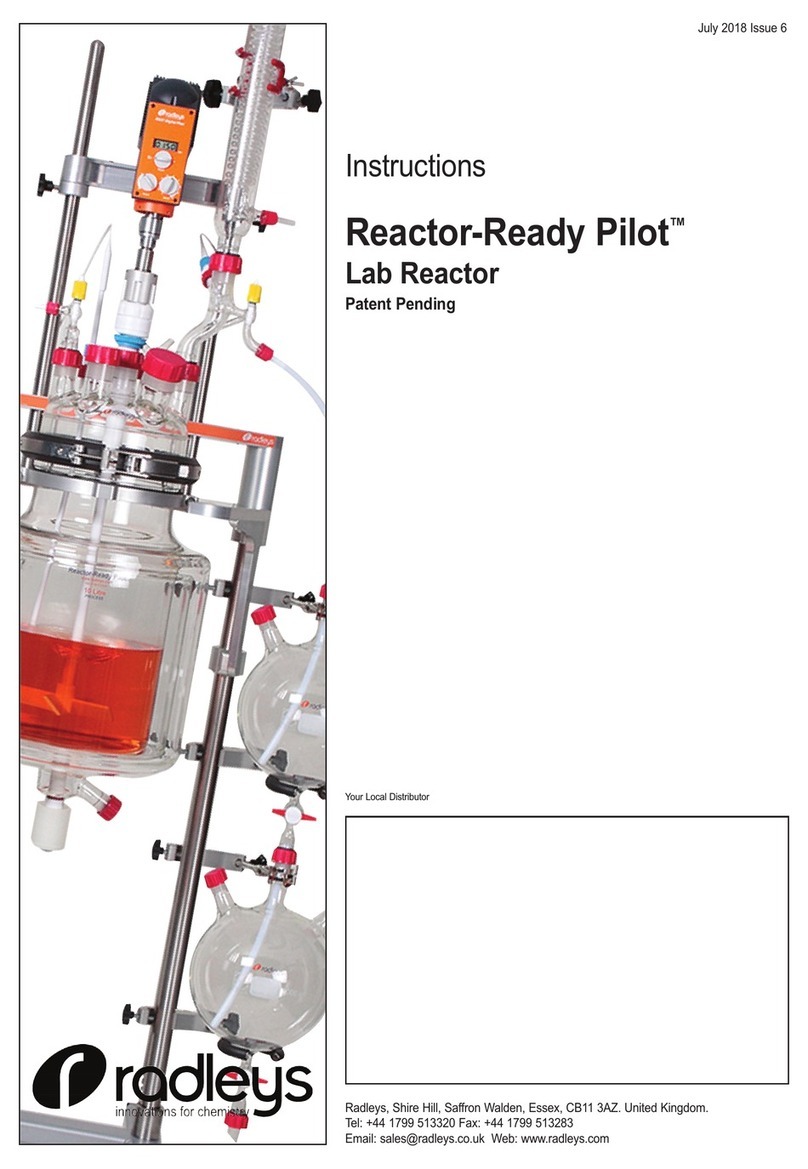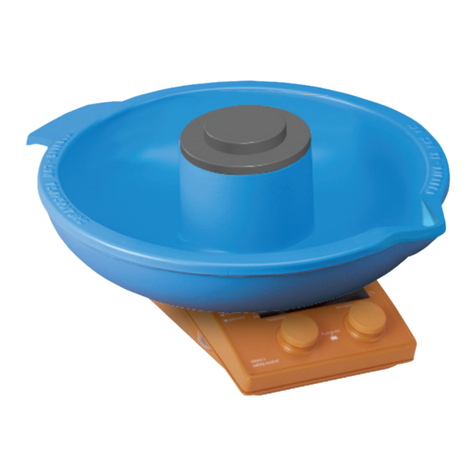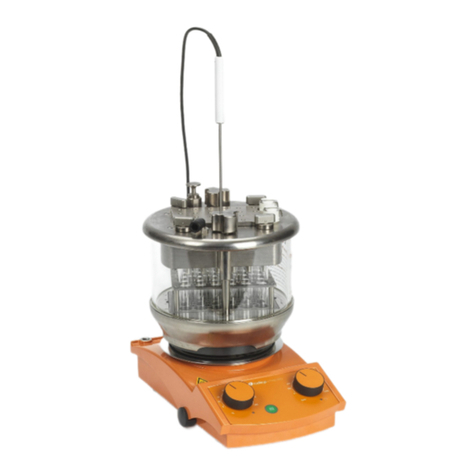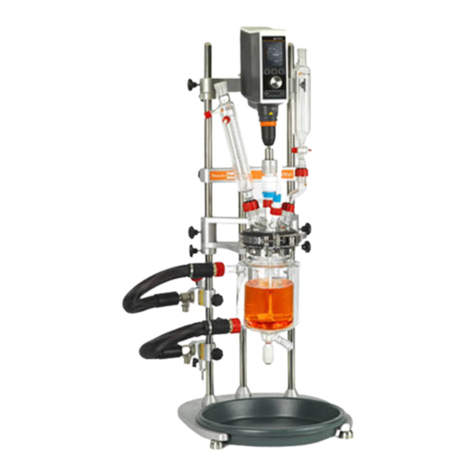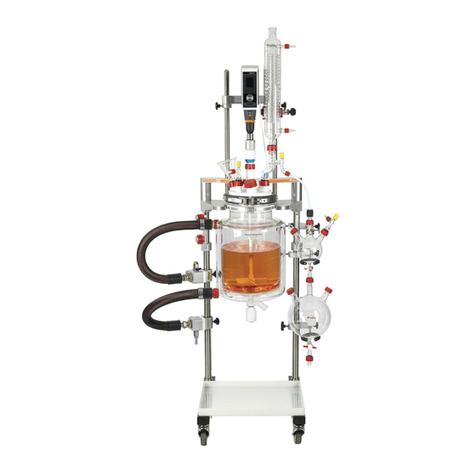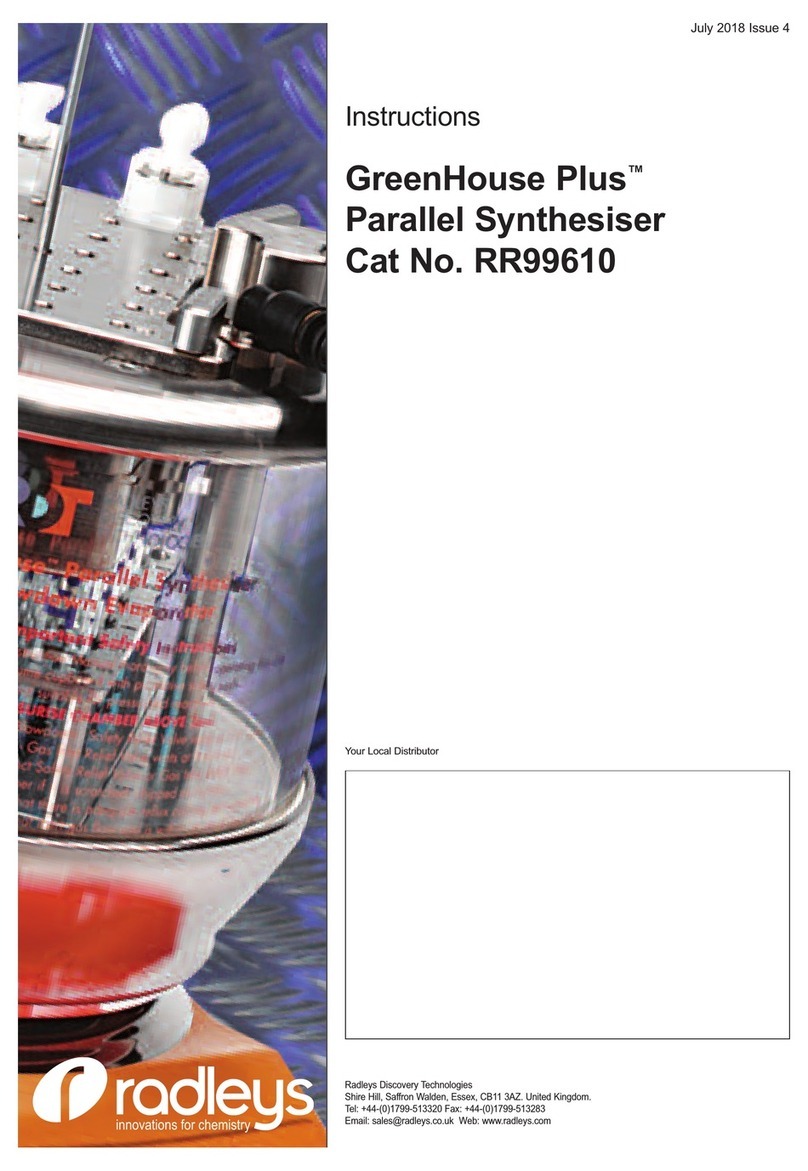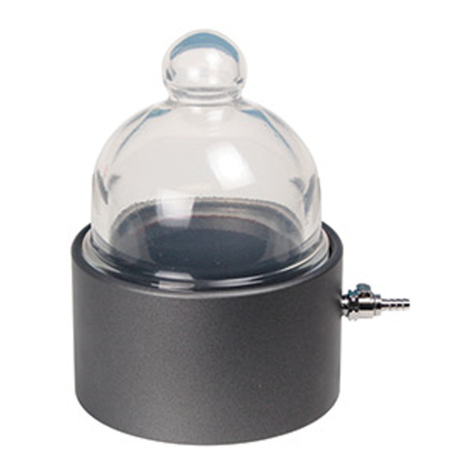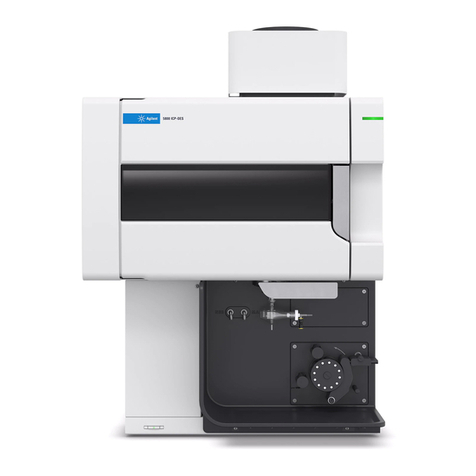3
3Safety guide
Please read this safety guide completely before using Reactor-Ready.
•Reactor-Ready should only be operated by
trained and competent personnel. As with
all chemistries, a full risk assessment
should be performed prior to starting, and
care should be taken to monitor reactions
at all stages.
•It is the responsibility of the user to ensure
correct set up and continued maintenance
of the framework and clamps.
•Always ensure that the unit is located on a
level surface.
•Operate only in a fumehood with
protective safety sash.
•Always ensure the reaction or filter vessel
is clamped and supported correctly, using
the purpose-built framework and clamps.
The unit should never be operated without
this framework.
•Always read the complete instructions for
any third-party equipment, such as
overhead stirrers and thermoregulators, to
ensure you are not contravening any
safety recommendations or the
manufacturer’s warranty when used in
conjunction with Reactor-Ready.
•The maximum operating stirring speed for
the unit is 500rpm for continuous
operation and 800rpm for short periods.
•There is a risk of burns from hot or
extreme cold temperatures during and
after heating/cooling, so take care not to
touch the unit or any auxiliary equipment.
•Reactor-Ready will remain hot for a
considerable time after the heat source
has been turned off. A temperature probe
or temperature sensitive label can be used
to indicate when components are too hot
to touch.
•Before starting your operation, ensure all
fittings to the thermoregulator are fully
tightened with no leaks, and that the
manifold drain and vent valves are closed.
•Reactor-Ready metal components are
resistant to the majority of solvents and
are splash-resistant to dilute acids and
alkalis at room temperature.
•Wipe away chemical spills immediately
and avoid exposure to strong vapours such
as HCl, as continued exposure to chemical
vapours or liquids will cause corrosion to
metal and/or plastic components.
•Reactor-Ready can be used with reaction
vessels with a recirculating fluid at
temperatues between -70°C and +230°C,
or with filter vessels with a recirculating
fluid at temperatures between -30°C and
+180°C, without damage to the unit.
Careful inspection of all fluid connections
to the unit should be regularly performed
when operating at these temperatures.
•Ensure all wires and cables connecting
auxiliary equipment are secured such that
they cannot come into contact with the
unit surfaces or moving parts.
•Flowing liquids can create a build up of
static, leading to risk of sparks and
explosion. Care must be taken to properly
bond and ground components of Reactor-
Ready to meet local safety requirements.
•During operation, do not leave the unit
unattended unless in a supervised area.
